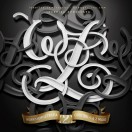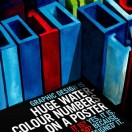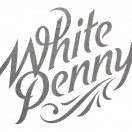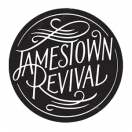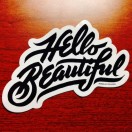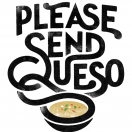Objective
Now that we have explored the various parts of existing typefaces, we’re going to create some of our own lettering. To be clear, typeface design is not the same thing as lettering; yet exploring the parts of typefaces can help to inform decisions in creating your own lettering. (What features do most people use to distinguish an uppercase I with a lowercase L, for example, or how might a problematic pairing of letters be made into one successful character like a ligature.) Lettering involves building relationships with specific groupings, whereas typeface design should be much more flexible.
You will select from a group of phrases of 5 or more words provided; you may use one of your own choosing if you like, but must get approval on it. (We’re adults here so there’s some latitude, but there’s no need to get vulgar or inappropriate for its own sake.)
The goal of the project is to compose the letters of the phrase into an interesting composition so that not only are you offering an insightful remark, but giving viewers a reason to read it, through the way that you handle it.
You won’t use any existing typefaces in your piece. You may reference them to get inspiration or guidance, but the letters are to be of your own creation. In the sketch stage, you should explore different lettering styles (blocky, curvy, script, quirky) and within each of those styles you should explore different compositions of the words of your phrase that allow the letters to sit nicely together.
A happy composition will not just happen; you will necessarily have to create some sketches that don’t work to find out what does work, each time resolving an issue that the previous sketch did not. In many cases, you should combine the strokes of neighboring letters, either to solve compositional problems or simply to allow the letters to create a more interesting lockup.
Specifications
- Lettering Only, No Imagery (Except for texture)
- No digital fonts or existing typeface designs
- 8×12, CMYK (No color restrictions)
- Lettering to be built in Illustrator
- Only the words of your phrase should appear (and only once)
- Use one of these phrases
Step 1: Exploration
Create at least 8 versions of your phrase, again exploring different styles and different compositions. Don’t simply redraw existing faces, or draw simple block letters. Characters should extend outside their bounds, flirt with other letters, create parts of neighboring characters, or otherwise move outside the arena of standard movable type.
These sketches should be tight enough to see how the letters will lock up, but not every detail needs to be resolved. These sketches are due to be reviewed, and one chosen by yourself and instructor along with guidance moving forward, by the class after assignment. If you have not explored enough with your sketches, you may be asked to do more. Don’t be bashful with your sketches. Due 2-15
Step 2: Refining the Sketch
Redraw the chosen version at a size of at least 5″ x 5″ (varying slight based upon composition) in a more clean and refined state. Any lockups or ligatures should be accounted for here, and awkward spacing should be eliminated in this stage. This is the type that your final version will be derived from, so differences that happen between this stage and the next should only be finessing that you can’t get from a pencil and paper. Due 2-17
Step 3: Digitize your Lettering
Scan your sketch in and begin to create a digital version of it. What you will ultimately turn in will be a poster with your lettering on it. The poster should be 8 x 12, horizontal or vertical, and can use both Photoshop and Illustrator. Your lettering, however, should be done in illustrator as vector elements to be brought in later on. You may use imagery for texture or ambiance, but there should not be any objects present on your poster.
Once you’ve gotten your lettering built and intact, we will address issues like awkward weights or strokes, and you should make your curves, where they exist, as smooth as you can using guidance and demos given in class.
Submission
You will submit digital and physical versions of this project. For your digital submission, drop your working files and a pdf with fonts embedded in a folder labeled [lastname_f_project2] in the dropbox before the beginning of class on the due date. Have your full-size physical print ready by the beginning of class.
